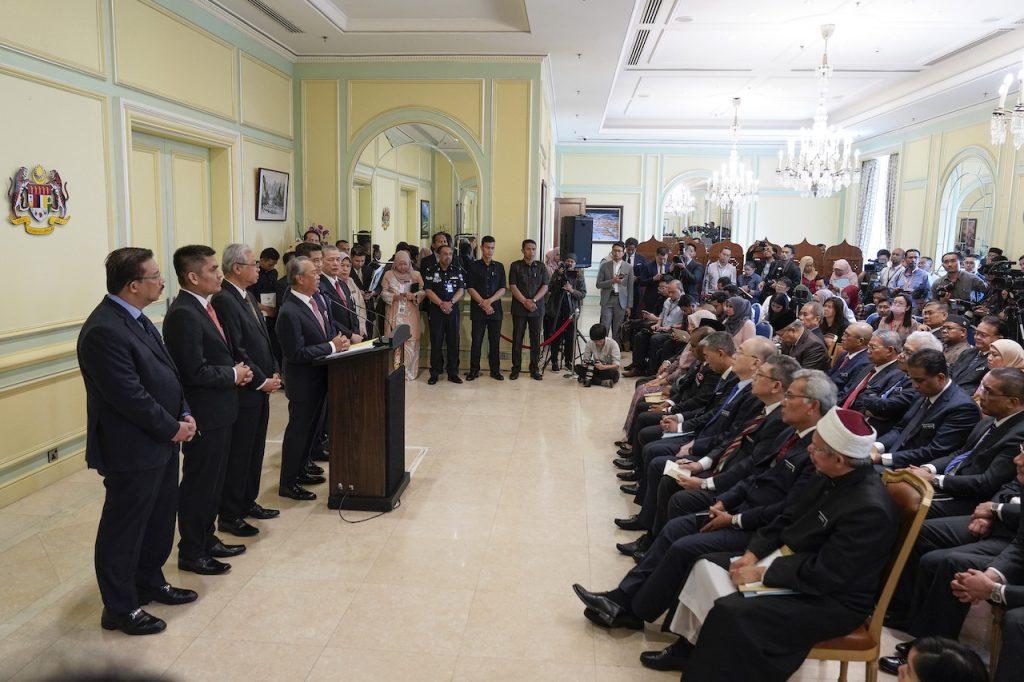If Muhyiddin is Malaysia’s first wartime prime minister…
He might do well to emulate other prime ministers who were in power during times of turmoil.
“Like it or not, Muhyiddin came to power during a time of war, through whatever legal ways were available as an alternative to snap elections,” MalaysiaNow wrote in a recent editorial.
“Like it or not, he (Muhyiddin) has earned a reputation as Malaysia’s first wartime prime minister since independence.”
If Muhyiddin is a wartime prime minister, then he needs a war cabinet. According to Collins Dictionary, a war cabinet is a committee formed by a government in a time of war.
Muhyiddin’s current cabinet has 32 ministers, including himself. Thirty-eight deputy ministers add to the total number of 70. It was constituted before the war – a peacetime cabinet.
But the country is now at war. If Muhyiddin’s peacetime cabinet is his wartime cabinet as well, then it is not an efficient way to execute war efforts.
Compare Muhyiddin’s cabinet with Winston Churchill’s wartime cabinet of 1940.
In 1940, Britain was confronted with two of the most important questions in its history. The first was who should lead Britain in the war against Nazi Germany. There were two candidates but it was Churchill who succeeded Neville Chamberlain as prime minister.
Churchill formed a war cabinet, initially consisting of the following members:
Prime Minister & Minister of Defence: Winston Churchill (Conservative)
Lord President of the Council: Neville Chamberlain (Conservative)
Lord Privy Seal: Clement Attlee (Labour)
Foreign Secretary: Lord Halifax (Conservative)
Minister without Portfolio: Arthur Greenwood (Labour)
Churchill strongly believed that the war cabinet should be kept to a relatively small number of individuals to allow efficient execution of the war effort. Even as the war cabinet would undergo a number of changes in composition over the next five years, Churchill’s own was kept small. On Feb 19, 1942, Churchill’s reconstructed war cabinet consisted of the following members:
Prime Minister and Minister of Defence Winston Churchill (Conservative)
Deputy Prime Minister and Secretary of State for Dominions Affairs: Clement Attlee (Labour)
Lord Privy Seal and Leader of the House of Commons: Sir Stafford Cripps (Labour)
Lord President of the Council: John Anderson (National)
Foreign Secretary: Anthony Eden (Conservative)
Minister of Production: Oliver Lyttelton (Conservative)
Minister of Labour: Ernest Bevin (Labour)
Churchill did not believe in having members who would have “nothing to do”.
Margaret Thatcher’s war cabinet during the Falklands War was similarly small, consisting of seven members as well. Theresa May was also urged to establish a war cabinet to oversee Brexit, mirroring “the approach used by prime ministers of the recent past to make decisions during armed conflicts or incidents like foot and mouth, when normal Cabinet committee processes are too cumbersome to keep pace with the demands of decision making.
A 10-member “war cabinet” was duly formed by May.
Churchill was said to be a prime minister of a coalition government. But his war cabinet looked more of a unity government.
Perhaps this is what Malaysia needs as the country faces a war with an unseen enemy. Muhyiddin’s peacetime cabinet is cumbersome – to say the least. Significantly, it is on an expanded public payroll.
Perhaps the peacetime cabinet can “take a break” for a wartime cabinet to “take over”. A war cabinet that is a unity cabinet.
The views expressed in this article are those of the author(s) and do not necessarily reflect the position of MalaysiaNow.
Subscribe to our newsletter
To be updated with all the latest news and analyses daily.
